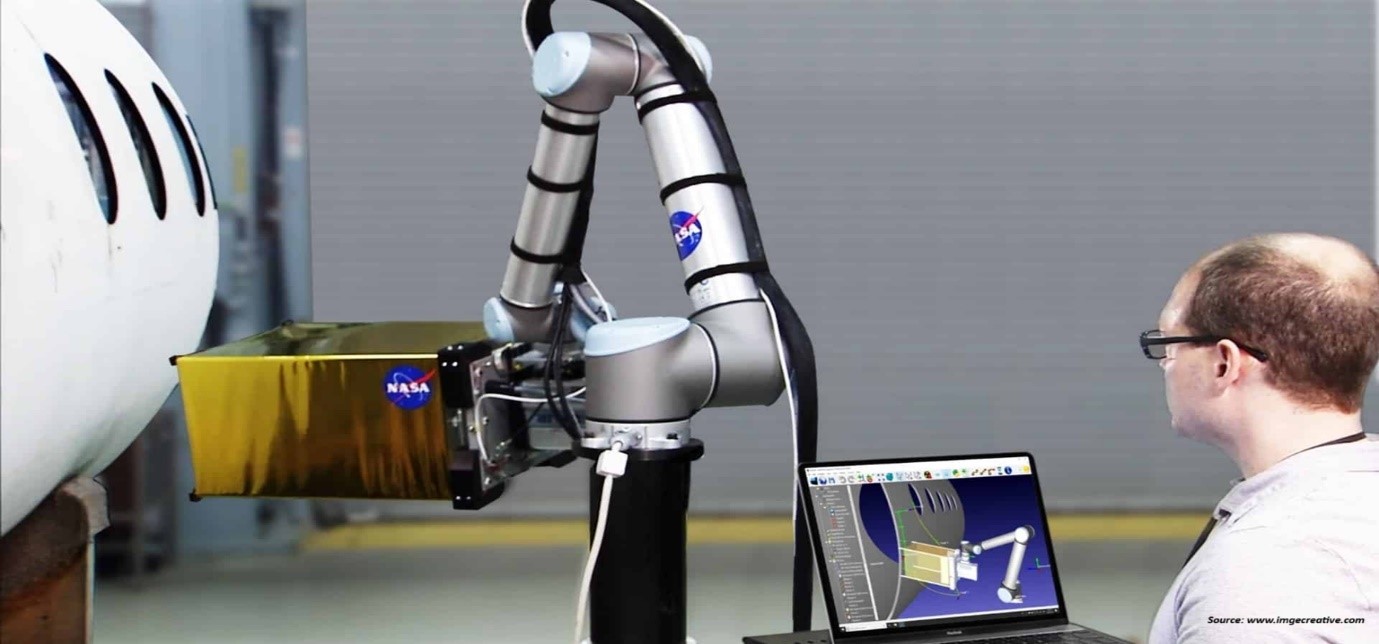
Indoor Location Market by Component (Hardware, Solution, and Services), by Application (Customer Experience Management, Inventory Management, Predictive Asset Analytics, Remote Monitoring, Sales & Marketing Optimization, Emergency Response Management, Risk Management, and Others), by Deployment (On-Premise and Cloud), by Technology (BLE, UWB, Wi-Fi, RFID, Magnetic Positioning, and Other Technologies) and Others – Global Opportunity Analysis and Industry Forecast 2023-2030
US Tariff Impact on Indoor Location Market
Trump Tariffs Are Reshaping Global Business
Market Definition
The global Indoor Location Market size was valued at 8.94 billion in 2022 and is predicted to reach 43.20 billion by 2030 with a CAGR of 21.8% from 2023-2030. Indoor location refers to the technology and methods used to determine and track the precise location of objects, people, or devices within indoor environments. It involves utilizing a combination of hardware, software, and positioning techniques to enable accurate indoor positioning and navigation.
Unlike outdoor GPS systems, indoor location systems rely on different technologies such as Wi-Fi, Bluetooth, RFID, or sensor networks to provide location information within buildings, malls, airports, or other enclosed spaces. These systems often utilize signals transmitted by beacons or access points to determine the position of a target object or individual.
Indoor location technology has various applications across industries, including retail, healthcare, logistics, and security. It can be used for purposes such as asset tracking, wayfinding, proximity marketing, indoor mapping, and enhancing overall operational efficiency. By enabling precise indoor positioning, indoor location technology opens up possibilities for improving user experiences, optimizing workflows, and enhancing safety and security within indoor environments.
Market Dynamics and Trends
The demand for indoor location is increasing due to the growing need for accurate and real-time location services. These services are becoming increasingly important in many industries and applications, such as logistics, asset tracking, and customer experience management, as businesses seek more accurate and reliable ways to track their customer’s assets.
Also, the increasing adoption of IoT and connected devices such as wearables and smartphones are further fueling the growth of the indoor location market. These devices generate huge amounts of data, which can be used accurately to track and monitor customers, assets, and other objects.
Moreover, numerous businesses are turning towards mobile applications to engage and provide targeted services to consumers using location-based technologies is further boosting the growth of the indoor location market. However, the absence of standardization in data formats, protocols, and algorithms for indoor location may restrain the growth of the market.
On the contrary, the introduction of Bluetooth low energy (BLE) technology and the use of Ultra-Wideband (UWB) technology in indoor location market are expected to create ample growth opportunities for the indoor location market in the future.
Market Segmentation and Scope of Study
The global indoor location market share is segmented on the basis of component, application, deployment, end user and region. Based on component, the market is classified into hardware, solution, and service. Solution is further subdivided into indoor tracking, indoor navigation, and database management. Indoor tracking is sub-divided into asset and people tracking and indoor location analytics. Service is further subdivided into professional services and managed services. Professional service is bifurcated into training & consulting and system integration and implementation.
On the basis of application, the market is categorized into, customer experience management, inventory management, predictive asset analytics, remote monitoring, sales & marketing optimization, emergency response management, risk management, and others. Based on deployment, the market is divided into on-premise and cloud. Based on technology, the market is categorized into BLE, UWB, Wi-Fi, RFID, Magnetic Positioning, and other technologies.
On the basis of end user, the market is categorized into, entertainment. hospitality, public buildings, retail, transportation & logistics and others. Geographical breakdown and analysis of each of the aforesaid classifications include regions comprising of North America, Europe, Asia-Pacific, and RoW.
Geographical Analysis
North America dominates the global indoor location market and is potently expected to remain dominant, throughout the forecast period. This is attributed to the rising demand for IoT technology-based devices such as tablets, smart phones, smart watch and vehicle navigation system. According to the United States Census Bureau, 64% of U.S. households owned a tablet computer in 2021.
Moreover, the presence of key market players in the region such as Apple, HERE Technologies and Google which are adopting strategies including launches and collaborations is further boosting the growth of the indoor location market. For instance, in July 2021, HERE technologies and Lyft Inc. collaborated to support location queries and real-time road closures data. Through this update the Lyft platform will provide more accurate driver ETA and a richer search database for places and addresses.
Also, in April 2020, Apple collaborated with Google to enable the use of Bluetooth technology for dealing with COVID-19. The collaboration aimed to provide contract tracking Bluetooth technology to help governments and health agencies reduce the spread of the virus, considering user privacy and security.
On the other hand, Asia-Pacific shows substantial growth in the global indoor location market. This is attributed to the factors such as the rapid growth of the mobile industry and increasing demand for location services, along with the need for better customer experience.
Also, the rising population coupled with the surge in the number of smartphone users in countries such as China, South Korea, and India. According to the Indian Ministry of Information and Broadcasting, the number of mobile users reached 1.2 billion in India in 2022.
Competitive Landscape
The indoor location industry includes several market players such as Sparkyo Technology Pvt. Ltd., Google LLC., Apple Inc., Inpixon, Cisco system Inc., Hewlett Packard Enterprise, Acuity Brands, Inc., Juniper Networks, Inc., Microsoft, and HERE technologies. These market players are adopting various strategies such as innovation and collaboration to maintain their dominance in the global indoor location market.
For instance, in May 2021, Inpixon acquired SaaS app platform and named as ‘CXApp’. This platform enables corporate enterprises to provide a custom-branded, location-aware employee app targeted at improving the workplace environment and hosting virtual and hybrid events.
Also, in July 2021, Microsoft partnered with NEC enabling Microsoft Azure as NEC’s preferred cloud platform. The main aim of this collaboration is to deliver enhanced capabilities to drive sustained digitalization, help customers transform their business models, and build digital workplaces for the post-pandemic.
KEY BENEFITS
-
The report provides quantitative analysis and estimations of the indoor location market from 2023 to 2030, which assists in identifying the prevailing market opportunities.
-
The study comprises a deep dive analysis of the indoor location market including the current and future trends to depict prevalent investment pockets in the market.
-
Information related to key drivers, restraints, and opportunities and their impact on the indoor location market is provided in the report.
-
Competitive analysis of the players, along with their market share is provided in the report.
-
SWOT analysis and Porters Five Forces model is elaborated in the study.
-
Value chain analysis in the market study provides a clear picture of roles of stakeholders.
INDOOR LOCATION MARKET KEY SEGMENTS
By Component
-
Hardware
-
Solutions
-
Indoor Tracking
-
Asset and People Tracking
-
Indoor Location Analytics
-
-
Indoor Navigation
-
Database Management
-
-
Services
-
Professional Services
-
Training and Consulting
-
System Integration and Implementation
-
-
Managed Services
-
By Application
-
Customer Experience Management
-
Inventory Management
-
Predictive Asset Analytics
-
Remote Monitoring
-
Sales and Marketing Optimization
-
Emergency Response Management
-
Risk Management
-
Others
By Deployment
-
On- Premises
-
Cloud
By Technology
-
BLE
-
UWB
-
Wi-Fi
-
RFID
-
Magnetic Positioning
-
Other Technologies
By End User
-
Entertainment
-
Hospitality
-
Public Buildings
-
Retail
-
Transportation & Logistics
-
Others
By Region
-
North America
-
U.S
-
Canada
-
Mexico
-
-
Europe
-
UK
-
Germany
-
France
-
Italy
-
Spain
-
Denmark
-
Netherlands
-
Finland
-
Sweden
-
Norway
-
Russia
-
Rest of Europe
-
-
Asia-Pacific
-
China
-
Japan
-
India
-
South Korea
-
Australia
-
Indonesia
-
Singapore
-
Taiwan
-
Thailand
-
Rest of Asia-Pacific
-
-
RoW
-
Latin America
-
Middle East
-
Africa
-
REPORT SCOPE AND SEGMENTATION:
|
Parameters |
Details |
|
Market Size in 2022 |
USD 8.94 Billion |
|
Revenue Forecast in 2030 |
USD 43.20 Billion |
|
Growth Rate |
CAGR of 21.8% from 2023 to 2030 |
|
Analysis Period |
2022–2030 |
|
Base Year Considered |
2022 |
|
Forecast Period |
2023–2030 |
|
Market Size Estimation |
Billion (USD) |
|
Growth Factors |
Growing need for accurate and real-time location services. Increasing adoption of IoT and connected devices such as wearables and smartphones. Towards mobile applications to engage and provide targeted services to consumers. |
|
Countries Covered |
28 |
|
Companies Profiled |
10 |
|
Market Share |
Available for 10 companies |
|
Customization Scope |
Free customization (equivalent to up to 80 working hours of analysts) after purchase. Addition or alteration to country, regional, and segment scope. |
|
Pricing and Purchase Options |
Avail customized purchase options to meet your exact research needs. |
KEY PLAYERS
-
Sparkyo Technology Pvt. Ltd.
-
Google LLC
-
Apple Inc.
-
Inpixon.
-
Cisco System Inc.
-
Hewlett Packard Enterprise Development LP.
-
Acuity Brands, Inc.
-
Juniper Networks, Inc
-
Microsoft
-
HERE Technologies

















 Speak to Our Analyst
Speak to Our Analyst





















